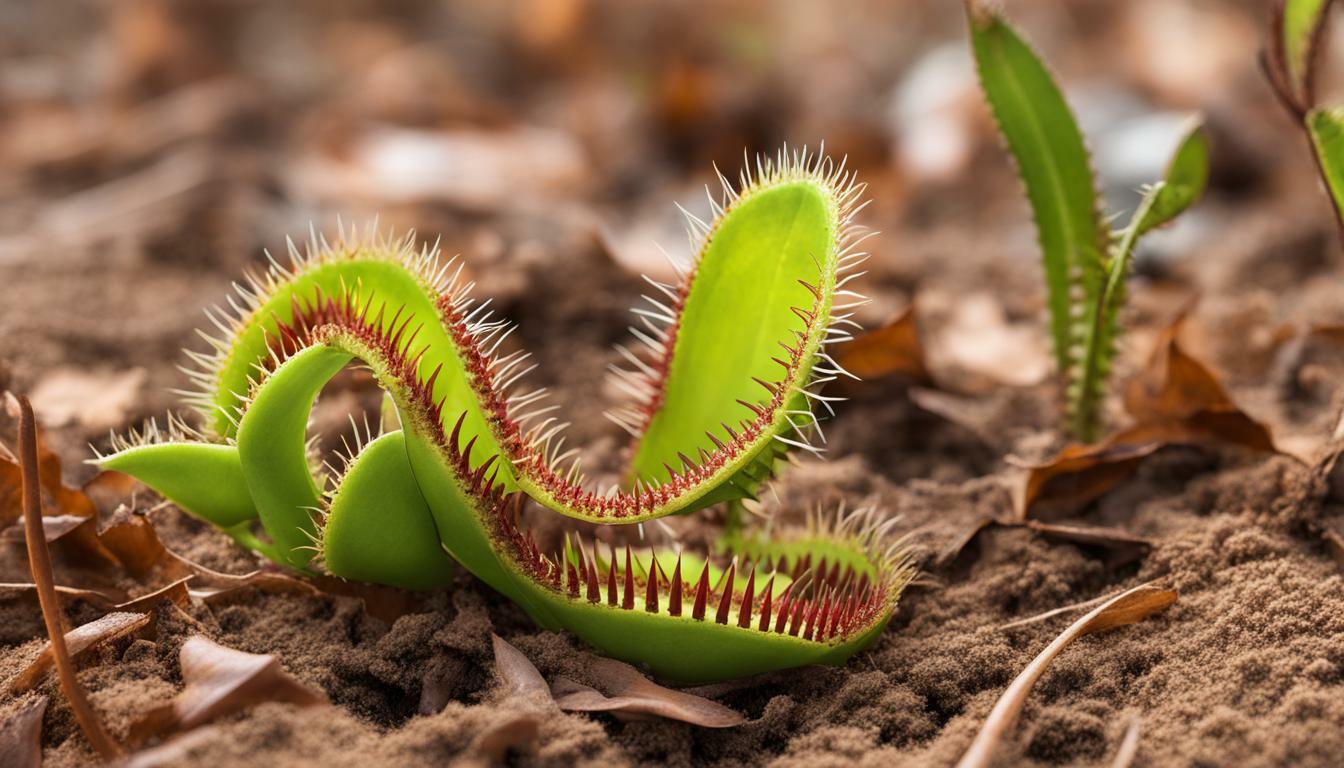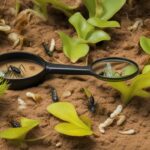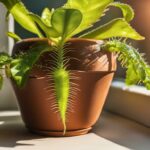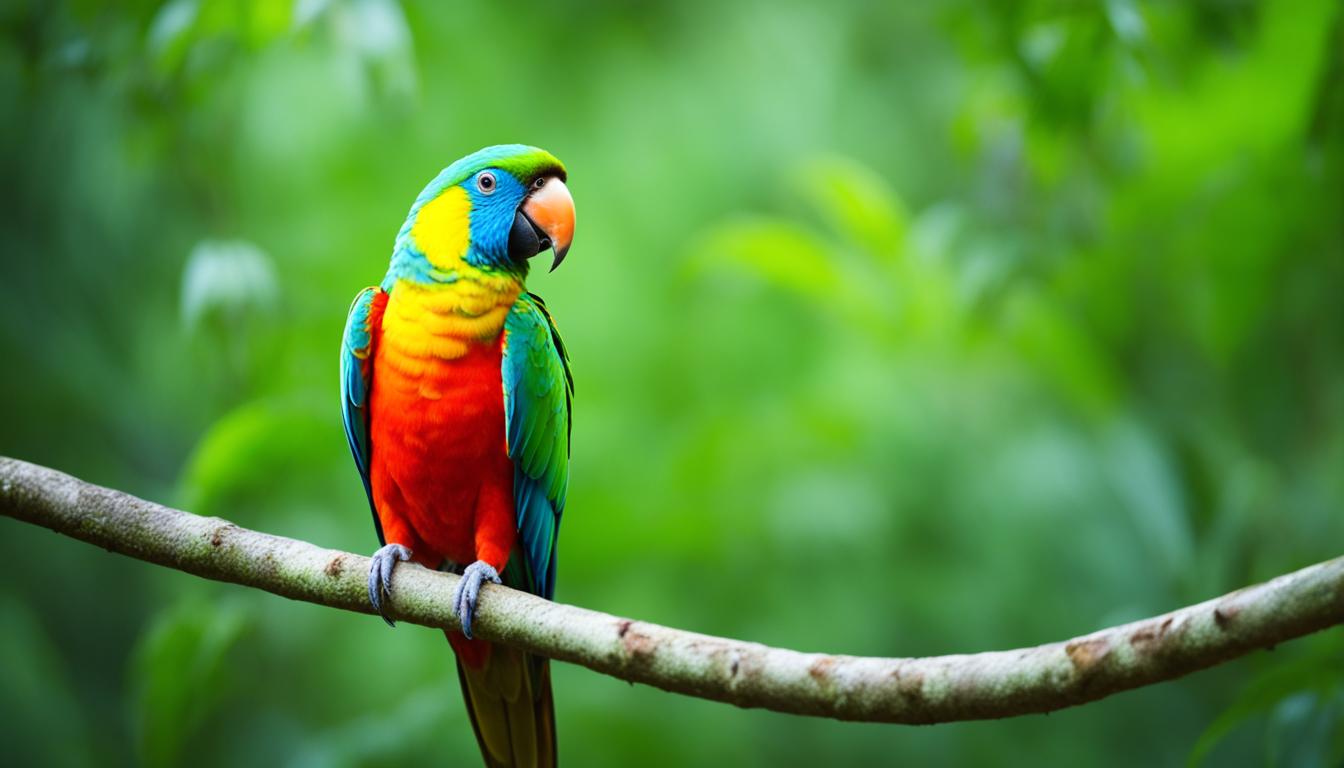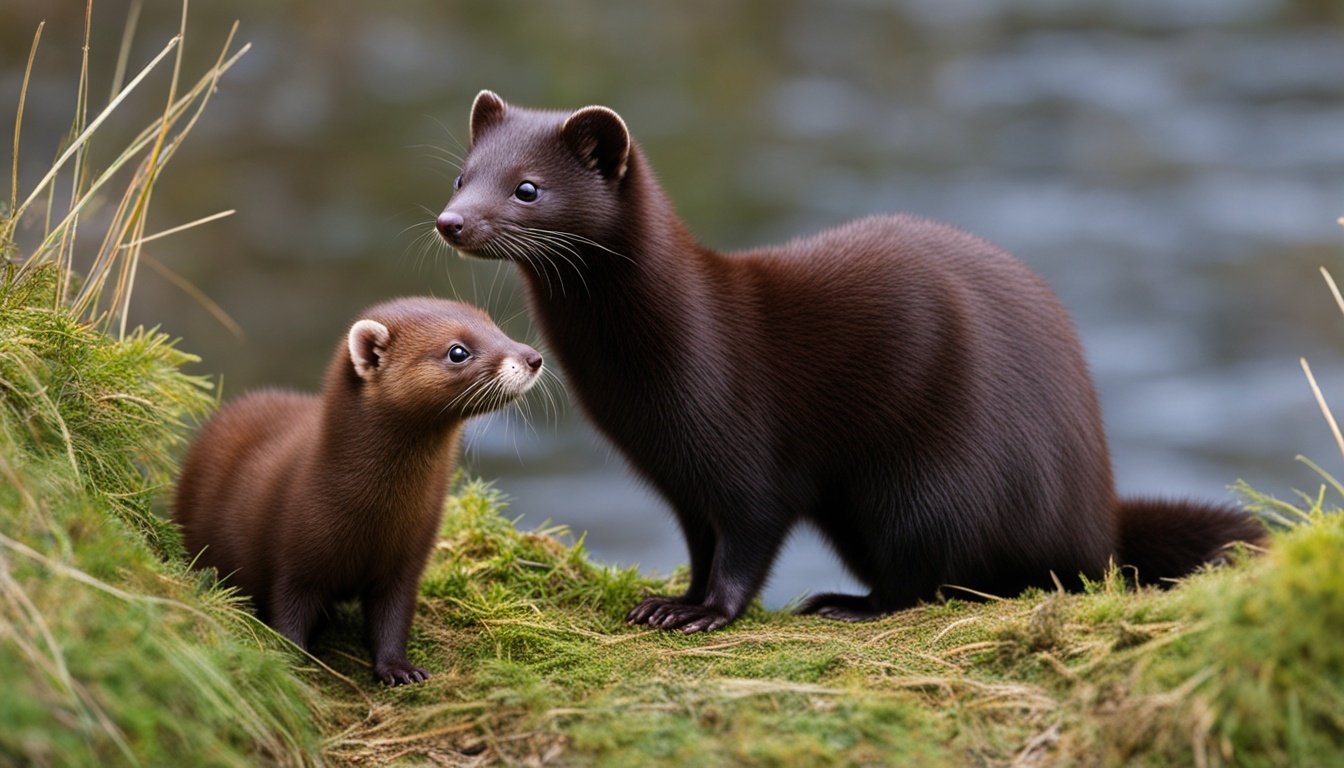Do you own a Venus flytrap and want to ensure it stays healthy and thriving? It’s essential to understand the common mistakes people make when caring for this unique plant. Avoiding these mistakes can go a long way in ensuring that your Venus flytrap stays healthy and ultimately lasts longer.
One of the most critical factors to keep in mind is that Venus flytraps are not like other plants, and their care requirements are specific. Even the slightest mistake can harm or kill them, making it crucial to understand the dos and don’ts of Venus flytrap care.
Key Takeaways:
- It’s important to avoid common mistakes when caring for a Venus flytrap to ensure its longevity and healthy growth.
- Even the slightest mistake in Venus flytrap care can harm or kill the plant, as it has specific requirements.
Understanding the Venus Flytrap’s Natural Habitat
When it comes to caring for a Venus flytrap correctly, understanding the plant’s natural habitat is one of the best practices for venus flytrap care. Venus flytraps are native to boggy areas in the southeastern United States, where the soil is poor in nutrients and acidic. These environments are typically sunny and humid, with temperatures ranging from 70 to 95 degrees Fahrenheit.
Knowing this, you can replicate the plant’s natural habitat as closely as possible to ensure it thrives. Venus flytraps should be planted in a mixture of sphagnum peat moss and sand to mimic the acidic and nutrient-poor soil of their natural environment. It’s also essential to keep the soil moist but not waterlogged, as the plant is adapted to a boggy environment.
Venus flytraps require full sunlight to grow and survive, so they should be placed in a sunny spot where they can receive at least 6 hours of direct sunlight per day. If you’re growing your Venus flytrap indoors, consider using a grow light to supplement natural sunlight.
Overall, understanding the Venus flytrap’s natural habitat is crucial to caring for these unique plants correctly. Replicating their natural environment as closely as possible by using the right soil, providing adequate moisture, and plenty of sunlight will help your Venus flytrap thrive.
Overfeeding the Venus Flytrap
One of the most common errors in Venus flytrap care is overfeeding. It’s essential to follow the correct feeding guidelines to ensure the plant’s health and longevity. Overfeeding can lead to a range of issues such as root rot, plant stress, and even death.
When feeding your Venus flytrap, avoid giving it large insects or too many insects at once. The plant can handle a maximum of three insects per week, so avoid the temptation to feed it more than that. Additionally, ensure that the insects are small enough for the Venus flytrap to consume fully. If the trap cannot close completely after capturing the prey, it will not digest and will turn black.
It’s also crucial to avoid feeding your Venus flytrap non-insect items such as cheese, meat, or fruit. The plant is not designed to digest these foods and may cause harm.
If you are unsure about feeding your Venus flytrap, consult a professional or experienced grower for guidance. With proper feeding, your Venus flytrap will thrive and remain healthy for years to come.
Inadequate Light Exposure
Another common mistake in caring for a Venus flytrap is not providing it with adequate light exposure. Remember, in its natural habitat, the plant receives six hours of direct sunlight each day.
A lack of sunlight can lead to weak growth and can make the plant more susceptible to disease. If you’re growing your Venus flytrap indoors, make sure it is placed in a sunny window that receives at least four hours of direct sunlight each day.
If you don’t have a sunny window, you can use artificial lights. LED grow lights are a good option because they are energy efficient and emit the right color spectrum for optimal growth. Place the lights 6-12 inches above the plant and keep them on for at least 12-16 hours per day.
Remember, too much light can also be harmful to your Venus flytrap. If you notice the leaves turning brown or black, it might be getting too much direct sunlight.
Providing your Venus flytrap with the right amount of light is essential to its growth and survival. Keep these tips in mind to avoid mistakes in providing light exposure to your plant.
Inadequate Light Exposure
One of the most common missteps in caring for a Venus flytrap is not providing enough light exposure. As a carnivorous plant, the Venus flytrap requires a lot of sunlight to thrive.
It is recommended that you place your Venus flytrap where it can get at least 6 hours of direct sunlight each day. If you don’t have access to natural sunlight, you can use artificial grow lights.
However, be careful not to expose your Venus flytrap to too much light, as this can also be harmful. If the leaves start to turn brown or black, it may be a sign that the plant is getting too much light.
Remember, providing adequate light exposure is key to the health and growth of your Venus flytrap.
Conclusion
Caring for a Venus flytrap can be challenging, but by avoiding common mistakes, you can ensure that your plant thrives. Remember to avoid overfeeding your Venus flytrap, use distilled water for watering, provide adequate light exposure, and understand the plant’s natural habitat. These steps will help you care for your Venus flytrap correctly and keep it healthy.
What Are Some Common Mistakes That Can Harm Venus Flytraps?
When it comes to venus flytrap care tips, it’s crucial to avoid common mistakes that can harm these intriguing plants. One mistake to avoid is overfeeding, as these carnivorous plants require a balance between catching prey and conserving energy. Overwatering is another common pitfall, as it leads to root rot. Lastly, resist the temptation to touch the traps frequently, as this can cause mechanical damage and hinder their ability to catch prey effectively.
FAQ
Q: What are some common mistakes to avoid when caring for a Venus Flytrap?
A: Some common mistakes to avoid when caring for a Venus Flytrap include overfeeding the plant, improper watering techniques, inadequate light exposure, and not understanding its natural habitat.
Q: Why is overfeeding a Venus Flytrap a mistake?
A: Overfeeding a Venus Flytrap can harm the plant by causing it to develop weak traps and expend unnecessary energy. It is important to feed the plant in moderation and not exceed the recommended frequency and amount.
Q: What are the proper watering techniques for a Venus Flytrap?
A: Proper watering techniques for a Venus Flytrap involve using distilled water and ensuring that the soil remains moist but not waterlogged. It is important to avoid letting the plant sit in water for extended periods.
Q: How much light exposure does a Venus Flytrap need?
A: Venus Flytraps require at least 6 hours of direct sunlight each day. It is important to place the plant in a location where it can receive adequate light, such as a sunny windowsill.
Q: Why is understanding the Venus Flytrap’s natural habitat important?
A: Understanding the Venus Flytrap’s natural habitat helps provide the right care for the plant. It allows you to replicate its natural environment by mimicking factors such as temperature, humidity, and soil conditions.

